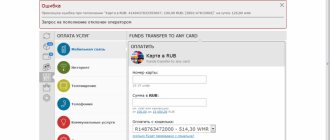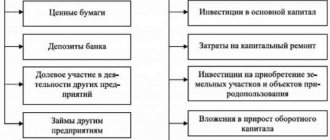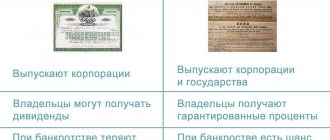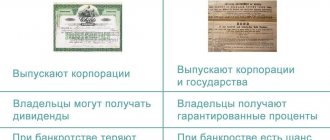03.12.2019
In October 2020, a list of banking transactions with precious metals exempt from value added tax was legislated. The law that has entered into force does not yet consider the purchase of bullion from precious metals by private individuals. Legislative amendments abolishing VAT for ordinary people, sent to the State Duma in the summer, were returned for further development. If they are accepted, then investing in gold will become profitable. Let's find out how to profitably buy precious metals and coins made of gold and silver?
►
watch video
►
gold educational program
►
gold price forecast
What is attractive about investing in gold and what is its price?
Since the beginning of this summer, the price of gold has already jumped by 13.48%, breaking a six-year price record. Now gold sells for about $1,500 per ounce. Experts predict a further increase in 2020 to $2,000 or more.
The rise in price affected not only gold, but also silver, which over the same reporting period increased in price by a record 20%. The last time such an increase was recorded was back in 1982. Platinum also does not lag behind the first two noble metals. Its growth was 16.2%.
Investing in gold is a traditional safe haven. It makes it possible to save savings from instability in politics and the economy, protects against currency inflation, negative interest rates and other financial troubles.
Investing in the yellow metal, buying investment coins made of gold and silver, as well as precious metal bars, forces people not only to the danger of the upcoming recession of the global economic system, but also to the US-China trade wars combined with military escalation in the Middle East.
What precious metals are in demand?
Today, the following types of precious metals are used as investment objects:
- Gold. Most often used as a tool for storing savings. It has a low yield, but allows you to preserve savings against the backdrop of rising inflation. Many countries, including the United States, Russia and China, hold government reserves in the form of gold bullion.
- Silver. Unlike gold, silver can be considered a long-term investment with higher returns.
- Platinum. Widely used in the automotive, electrical, medical equipment and jewelry industries. It is used to a lesser extent as a way to store savings compared to gold and silver.
- Palladium. Like platinum, this metal became known only at the beginning of the 19th century and found widespread use in industry. Demand, and, accordingly, the price of palladium is growing every year due to the fact that the requirements for car production are becoming more stringent.
The high cost of these metals is caused by their expensive extraction and processing. They are found in nature much less frequently compared to other elements, but at the same time they have good resistance to external factors, that is, they are not subject to oxidation and rust.
Is it profitable to invest in precious metals?
The cost of precious metals is always consistently high. Crisis times only increase the demand for them. The main advantage of metal assets, in comparison with paper currency and shares, is that the price of gold and silver cannot be reset. This is despite the fact that the profitability of precious metals over a short period of time is not so high. Within 1 year, the metal may prove to be an unprofitable and even unprofitable investment. Thus, in the period 2013 - 2017, gold lost about 20% in price. Therefore, investments in it are justified only in the long term from 5 to 15 years.
Investing in gold means diversifying your long-term financial portfolio. Such an asset is extremely convenient for creating reliable pension savings or easily transferring an inheritance to relatives in the future.
Advantages and disadvantages of investing in precious metals
I'll start with the positive:
- Noble metals are self-sufficient and superior in value to unbacked paper money.
- Liquid even in war. Therefore, even if all the currencies of the world depreciate and the stock markets collapse, they can always be sold.
- Valued all over the world – a universal currency.
- They have unique physical and chemical properties and retain their aesthetic appearance for a long time.
So, precious metals are rightly called defensive assets.
What then are their shortcomings?
- You will have to wait for profit, at best – from 3 to 5 years.
- In Russia, purchases, sales and other transactions with precious metals are subject to taxes.
- The probability of a percentage increase is zero.
- High purchase price.
And precious metals are sensitive to the monetary policy of the US Federal Reserve. When the dollar rises in price, all investors' investments are returned to securities. Risky.
Is it profitable or not?
Experts say that the gain can range from 100 to 400% percent. But you need to wait at least 3 years. And if the timing is not scary, then it’s time to learn everything about what types of investments exist in this direction.
How much can you invest in gold?
The main rule of market players is not to keep all their eggs in one basket. It is unwise to invest all your money in one thing. Even if the asset seems particularly profitable and attractive to you, do not rush. Think about risk protection in the form of diversification.
According to most experts, you should not have more than 10% of the total volume of precious metals in your investment portfolio. Some experts recommend their share presence at a level of 6 to 9%. There are other judgments. Other experts believe that you can safely invest up to 20% of your savings in metal.
Much depends on the profile of the investment. If the portfolio is conservative and necessary to protect savings and not make a profit, then it can contain up to 33% (about one third) of gold, silver and other precious metals.
What other metal to invest in besides gold?
Investments in gold are the most popular. The central banks of leading countries, as well as the richest people in the world, keep it in their reserves. Yellow metal is an indicator of wealth and prosperity. But investment opportunities are not limited to them. There are also palladium, silver and platinum.
The second most attractive precious metal for investment is silver. It is affordable and duplicates the dynamics of gold quotes. However, it is highly dependent on the situation in the economy and industry. Therefore, the slowdown in economic development in the world, while strengthening the position of the yellow metal, has a negative impact on silver.
Relatively new to the market, palladium and platinum do not yet inspire the same confidence among investors as silver and gold assets. They are more in demand in industry. Hence the dependence on the state of the economy and production.
Precious metals market in Russia
There is the so-called “primary precious metals market”, which is entered by mining enterprises and refineries (they purify gold from impurities and make it marketable). Then they sell gold on the primary market, where only industrial consumers and organizations with licenses, and a number of Russian banks have access. A private investor cannot get here.
And gold reaches the rest of the world only through banks. In jewelry, in trade, and on this path gold becomes a commodity and is subject to VAT of 18%, which leads to a significant increase in the price of gold in relation to regular prices for precious metals.
Either through banks, precious metals reach the consumer in the form of various products available to retail investors:
- Ingots, metal bill is the answer. storage
- Coins: collectible and investment.
- Unallocated metal accounts (UMA).
- Exchange trading of precious metals. Essentially, this is the same compulsory medical insurance, only with the possibility of buying/selling on the market.
- Mutual funds, futures.
Not all banks have the right to work with precious metals. To do this, the bank must have a separate license for the right to attract deposits and place precious metals. Today, about 150 credit institutions have a license. Of these, most banks do not conduct any real activities related to precious metals.
About 78% of the metal accounts market is accounted for by Sberbank.
Sberbank, as a monopolist in the compulsory medical insurance market, can set any commissions for working with precious metals and takes great advantage of this. Compulsory medical insurance accounts are not insured, so people often choose Sberbank as the most reliable.
How to start investing in gold or other precious metals?
There are the following options for purchasing precious metals:
- Buy bullion from a bank.
- Buy investment coins.
- Open a compulsory medical insurance (metal bank account).
- Resort to mutual funds.
- Participate in exchange trading.
- Purchase securities of mining companies.
It is important to first understand why you are investing in gold, silver or another metal. Do you want to make a profit or just save your savings? Each goal requires a specific investment strategy.
Alternative ways to invest in metals
If the options for investing in precious metals described above are not suitable for some reason, then you can use alternative methods:
- Acquisition of shares of gold mining companies . There are few of them in Russia - these are Buryatzoloto, Lenzoloto, Polyus, Seligdar and Polymetal. You can buy them through any broker with access to the Moscow Exchange. In addition to the increase in the value of the shares themselves, you can count on receiving dividends, the size of which will depend on the company’s revenue and, in general, on the prices of precious metals.
- Purchase of bonds of the same companies . At the moment, bonds are not publicly traded, but if they appear, they can be purchased to diversify investments. The main difference between debt securities and shares is that bonds have a guaranteed coupon income, which brings them closer to bank deposits in terms of the method of generating profit.
- Purchasing a gold mutual fund . Many management companies, including Sberbank Asset Management, VTB, Raiffeisen, Gazprombank, offer mutual funds that invest in securities of gold mining enterprises and directly in precious metals. In this case, asset management is carried out by professional market participants, and the investor receives income due to the growth in the value of the share.
- Purchasing ETF Gold . There is no opportunity to buy a “gold” ETF through Russian brokers yet. But you can find access to a foreign broker and buy shares of the desired fund through them.
- Options, futures, forex . Particularly risky ones can try to work in the derivatives market, purchasing options and futures on precious metals, or in Forex, making money on CFDs (contracts for difference), but this already relates more to the area of speculation than investment.
Thus, there are many ways to invest in precious metals. The simplest and most effective is buying bullion or investment coins. For novice investors, the option with paper gold is suitable - opening a compulsory medical insurance in a reliable bank. There are also alternatives - you can invest in “gold” mutual funds and ETFs or directly in shares of gold mining companies. Or even speculate on price differences within a day or between days.
Are bullion bars expensive?
Precious metal bars come in different weights, starting from 1 gram. Therefore, the purchase does not have to be expensive.
The required documents received upon acquisition include:
- certificate of authenticity of the product from the manufacturer;
- an act with information about the metal, its characteristics, individual numbering of the ingot, purchase price, date and data of the buyer and seller.
The difference between jewelry gold and investment gold is its fineness. In bars and bullion coins it is maximum (usually 999 or 9999). For jewelry, a smaller proportion of precious metal in the alloy is allowed, for example, 585. The number 999 indicates that per 1000 units of the product’s mass there are 999 units of pure gold or silver.
The disadvantage of bullion is that you have to pay VAT when storing it at home.
Another disadvantage is that, based on the quotes of the Central Bank, Sberbank sets its price for the sale and purchase of bullion. The difference in price (bank spread) is too large to make investing in gold bullion profitable.
Tax can be avoided by storing the bullion in a bank. But this is a paid service, and instead of the expected income, you will only receive additional costs.
It is possible to legally avoid paying VAT and personal income tax when selling bullion if it occurs more than 3 years after purchase.
Pros and cons of investing in precious metals
The main advantages of investing in precious metals are:
- high liquidity – both bullion and investment coins are quite easy to sell and buy;
- the price of metals rises during crises, which protects against losses on other “fronts”;
- the price of gold is rising in dollars, which makes ruble investments even more profitable;
- low entry threshold - literally 1000 rubles are enough for investment;
- you can diversify within a “metal” portfolio;
- There are different ways to invest in precious metals - buy bars, investment coins, shares of mining companies, or open impersonal metal accounts.
But it is necessary to note the disadvantages of investing in precious metals:
- gold itself does not generate income, like, say, a deposit or bonds;
- during periods of stability, prices for precious metals fall or freeze;
- not all assets are liquid - for example, assets on compulsory medical insurance can only be sold in the bank where they were purchased;
- bars and coins need to be stored somewhere and taken care of (for example, silver quickly tarnishes and its price drops), and this is an additional expense;
- When selling bullion, you will have to pay not only personal income tax, but also VAT in the amount of 18%.
In short, without proper experience and accurate calculations, investments in precious metals can bring losses instead of income.
Will VAT on the purchase of precious metal bars be abolished?
The abolition of VAT on private investments in gold and other precious metals in bullion is still in question. The corresponding bill in the Duma was returned for revision.
If this does happen, then investing in gold and silver will become profitable for individuals. Demand for precious metals will jump by 10-15% against the backdrop of falling deposit rates and constantly rising prices for precious metals. The only obstacle to such changes can be the low purchasing power of the population in Russia. It's likely that instead of buying bullion coins made from gold and silver, people will prefer bullion.
Is it possible to buy investment coins made of gold or silver without paying VAT?
Purchasing coins made of precious metals does not require payment of value added tax. Only in case of sale it is necessary to pay personal income tax. You can avoid this if you sell the coin after 3 years of owning it.
The cost of coins already includes the cost of their production. In addition to this, the Central Bank makes a markup of up to 20%, and every other bank also “throws on” its own commissions. In this case, the repurchase occurs at a price sometimes 70% lower than the original one. So, if you bought a coin for 6,000 rubles, then you can return it back to the same bank only for 2,000 rubles.
There are downsides to precious metals in bullion form. This is the need to pay VAT and low liquidity. It will not be possible to quickly implement them by turning them into money. Unlike bullion, investment gold coins have high liquidity on the secondary market
, which we have already written about here.
The main driving factor in acquiring metal assets is psychology. People are eager to buy gold and silver bullion coins and bullion because they enjoy owning, storing and handling a living precious metal. This is a kind of magic.
In a practical sense, investing in gold and silver is only worthwhile in the long term or as a hedge against economic crises.
Investment options in precious metals
Ingots
The most obvious and simple way to invest in precious metals is to buy physical gold or silver bullion. The cost of an ingot is determined by its weight and fineness. The higher the quality of the metal and the greater its weight, the more expensive the purchase will be - but you will also be able to sell it at the highest margin.
Precious metals in the form of bars are the most liquid asset. They can be purchased at any bank and then sold - to the same or to another bank, to other investors, to a jewelry workshop, etc. Physical gold can be used as collateral if necessary.
But this option has a significant drawback: the ingot must be stored in special conditions so that it is not damaged. If there is even the slightest scratch on it, the product will lose tens of percent in value. Most often, bullion is stored in safe deposit boxes, the rental of which can cost a pretty penny.
If you are planning to invest a large amount in precious metals , then bullion is an excellent option, since the benefits from the investment will exceed the costs. However, if you have small savings, it is better to choose other options.
Anonymized metal account
Compulsory health insurance is essentially paper gold. The investor actually invests money in virtual precious metals - the bank contains a record that a specific person owns a certain number of grams of gold or silver.
Compulsory medical insurance quotes change in accordance with the quotes of physical precious metals, so it makes sense to buy paper gold when the value of the main asset falls. An investor can make money by buying metals on an impersonal account at a lower price and selling them at a higher price.
Advantages of the method:
- metals do not need to be stored anywhere;
- no need to pay VAT on sales (only personal income tax);
- Compulsory medical insurance is free;
- the entry threshold is minimal - gold can be purchased from 0.1 grams, other metals - from 1 gram.
Minuses:
- high spreads - some banks mark up 30-40%;
- no interest is accrued on the account balance;
- funds for compulsory medical insurance are not protected by the DIA, and therefore, in the event of a bank bankruptcy, they can only be returned during bankruptcy proceedings.
It should also be mentioned that gold can only be sold through compulsory medical insurance to the bank where the metal account was opened. You cannot open a compulsory medical insurance at Sberbank and sell it at VTB at a better price.
[adsp-pro-3]
Investment coins
Another option is to buy special investment coins. In Russia, most of them are sold at a nominal price through branches of Sberbank and VTB.
Numismatic experts advise giving preference to foreign coins. The most popular ones are American, British, Australian, Austrian, German, Chinese, for example, the Austrian Philharmoniker and the Australian Kangaroo are highly valued on the market.
Foreign coins have a higher gold content because the global coinage standard is the ounce. Russian coins contain only a quarter of an ounce of gold. Therefore, they are generally cheaper, but they can also be sold at a lower markup. The most popular domestic coins are the Soviet “Sower” and the Russian “St. George the Victorious”.
Silver bullion coins are also popular, especially among private collectors. They are an order of magnitude cheaper than gold (since silver is cheaper than gold) and are often purchased as a spectacular gift.
What is compulsory medical insurance?
Compulsory medical insurance or an impersonal metal account is a kind of virtualization of precious metals. It’s just that the banking system will store information that you have a certain number of grams of gold, silver, platinum or palladium.
The account is linked to the current rate of the selected metal asset and can be opened for any amount. When purchasing, you do not pay VAT and can profitably play on price fluctuations.
To receive real precious metal instead of virtual gold, you will have to pay a tax.
In the case of compulsory medical insurance, your account is not covered by the deposit insurance system. If the bank turns out to be unreliable or is robbed, the money will be lost.
Drawing conclusions
A few facts to consider when investing in precious metals:
- There are 4 metals as an investment object - gold, silver, platinum and palladium.
- You can buy metal both in kind (ingots, coins, jewelry) and in impersonal form (compulsory medical insurance, mutual fund, ETF).
- Investments in compulsory health insurance and mutual funds are not supported by the actual availability of metal; ETF shares are backed by bullion.
- You should not invest in precious metals at the peak of their value.
- The expected return on investment in most cases depends on changes in quotes.
- The main purpose of investing in precious metals is not to generate income, but to preserve savings in the face of constantly rising inflation.











